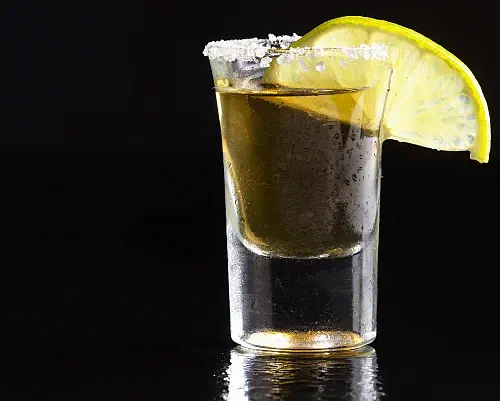Tequila: The Essence of Blue Agave
Tequila, a spirit deeply rooted in Mexican culture and tradition, is a type of mezcal made exclusively from the blue agave plant. Its production is primarily centered around the city of Tequila, northwest of Guadalajara, Mexico. While tequila is a relatively modern invention dating back to the 1800s, its predecessor, mezcal, has a history stretching back to the 1500s, introduced by Spanish conquistadores.
The Distinct Types of Tequila
- Blanco (Silver) Tequila: This is the purest form of the blue agave spirit, characterized by its clear appearance. It can be bottled immediately after distillation or aged in steel tanks for up to 60 days, offering a fresh and vibrant flavor.
- Reposado Tequila: Aged between two months and one year, Reposado tequila takes on a golden hue and incorporates subtle woody flavors from its time in the barrel, striking a balance between the rawness of Blanco and the complexity of Añejo.
- Añejo Tequila: This variety is aged in wood barrels for one to three years. Añejo is known for its smooth, deep wood flavors and is often more expensive, lending itself more to sipping than mixing due to its complex profile.
- Joven (Gold) Tequila: Joven, or gold tequilas, are often Blanco mixtos with added coloring and flavoring. They are generally less expensive and popular in mixed drinks. However, some Joven tequilas are a blend of Blanco with Reposado or Añejo, maintaining the 100% agave classification.
Understanding Tequila Terminology
- Agave: Central to tequila production, this desert plant is native to northern Mexico and the southwestern United States. Tequila specifically requires blue agave, known for its larger size and higher sugar concentration, making it ideal for alcohol production.
- Jalisco: This central western Mexican state is the heartland of blue agave cultivation, producing 80% of all blue agave. While tequila production has expanded beyond Jalisco, most distilleries remain in this region.
- Mixto: A tequila is considered a mixto if it contains less than 100% blue agave, with a minimum requirement of 51%. Mixtos are common entry points for many into the world of tequila.
- Normas Oficial Mexicana (NOM): Similar to France’s Appellation d’Origine Contrôlée, NOM is a certification ensuring that tequila meets specific geographic and ingredient-based standards.
The Most Known Cocktails, Including Tequila
Tequila: Margarita, Maria’s Margarita, La Picosa, Beet It, Paloma, Little Squirt, Red Sangrita, Green Goddess Sangrita, Cortez Julep, Prismatic Blade, Madame Ae-Ma, and Especia de Pinya.
Mezcal: Tide Is High, Grapes of Wrath, A Few Small Nips, Rosa Amargo, and Naked & Famous.
Did You Know About Tequila?
- Blue Agave Takes Time: The blue agave plant, the sole ingredient in true tequila, takes between 8 to 12 years to mature before it can be harvested for tequila production.
- Volcanic Soil is Key: The best blue agave is grown in the rich, volcanic soil of the Jalisco region in Mexico. This unique soil contributes significantly to the flavor profile of the tequila.
- A UNESCO World Heritage: The landscape of agave cultivation and tequila production in Mexico is so culturally significant that it was declared a UNESCO World Heritage Site in 2006.
- Tequila Has a “Mother”: The core of the blue agave plant from which tequila is made is called the “piña” because it resembles a large pineapple once the leaves are trimmed away.
- Not All Mezcals Are Tequilas: While all tequilas are mezcals, not all mezcals are tequilas. Tequila must be made specifically from the blue agave plant, whereas mezcal can be made from over 30 different types of agave.
- The Worm is a Myth: Contrary to popular belief, a true bottle of tequila does not contain a worm. This is actually a marketing gimmick used in some bottles of mezcal.
- Tequila Was Once a Symbol of Rebellion: During the Mexican Revolution, tequila became a symbol of national pride and rebellion against the Spanish, who preferred European spirits like brandy.
- A Drink with a Protected Name: Similar to Champagne and Cognac, tequila is a denomination of origin product, meaning it can only be produced in certain regions of Mexico.
- Tequila for Health?: Historically, tequila was often used medicinally, with the belief that it could cure ailments ranging from the common cold to more serious diseases.
- The First Export to the U.S.: Tequila was first exported to the United States in the late 19th century, and it has since become one of the most popular spirits in the country.
Tequila’s rich history and diverse styles are deeply connected to its Mexican origins. From the vibrant Blanco to the refined Añejo, each type offers a unique taste of the rich, volcanic soils of Jalisco and the centuries-old traditions of tequila production. Whether enjoyed in a classic margarita or savored neat, tequila is a testament to the craft of distillation and the cultural heritage of Mexico.

